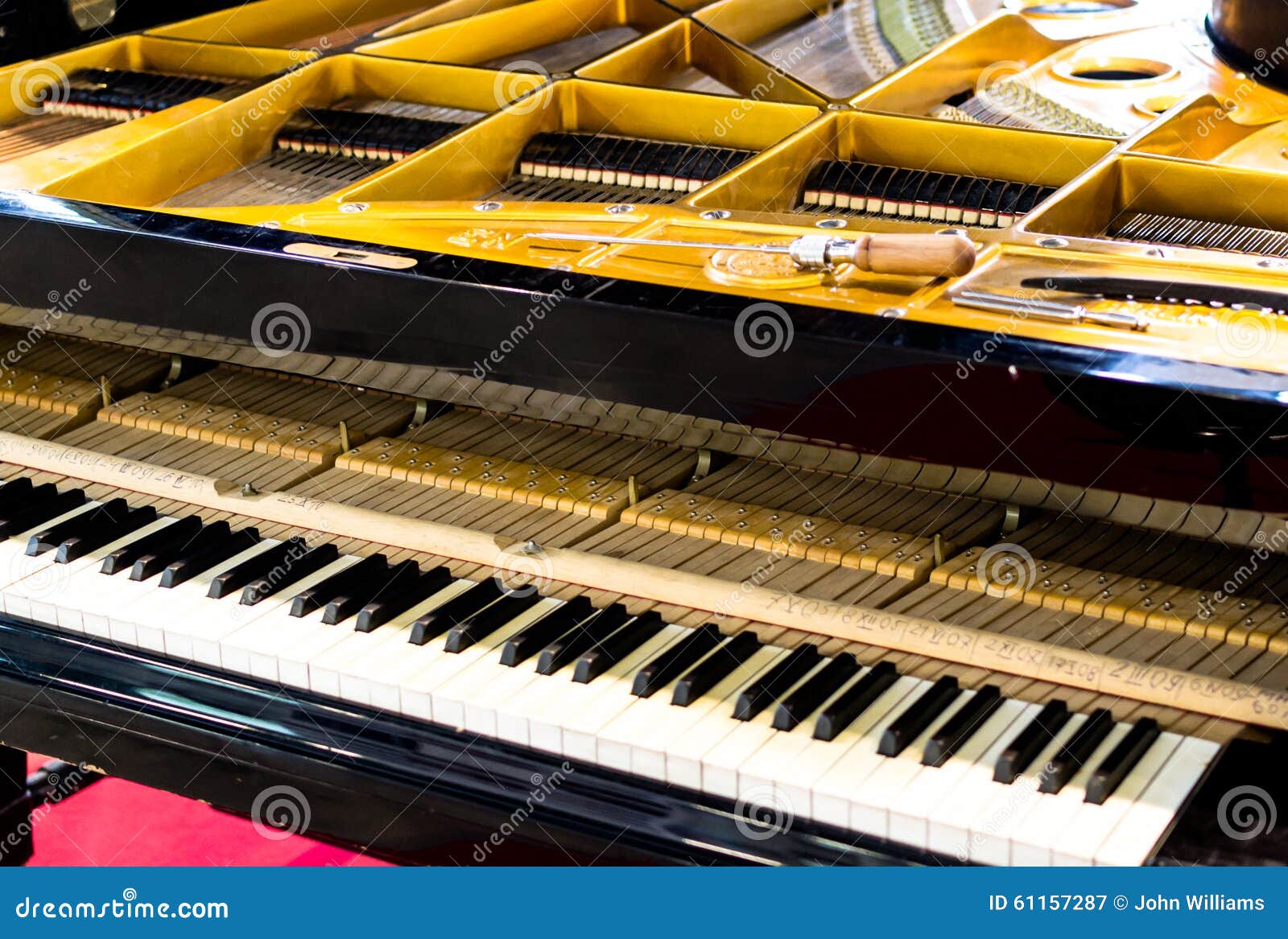

The humidity keeps changing whether anyone is playing the piano or not. Playing has less to do with knocking the piano out of tune as does the humidity. This is one of the most common misconceptions. Should a Piano That's Not Played Very Much Be Tuned as Often?

Concert halls and recording studios usually tune every performance. On the other hand, some people who have more sensitive ears, and consider themselves artists, have their piano tuned four times a year or more. This should be considered minimal and certainly should not go any longer than that. Some people like to go as long as a year between tunings. So, every six months is the general rule for maintenance after a "break-in" period of a year or so. This is because of the changes in humidity, and hence tuning due to the changes in season. Most piano manufacturers recommend at least four tunings in the first year and two tunings per year thereafter for a typical home piano. Typically a piano should "rest" for a few days to adjust to it's new environment before it is tuned. Moving it to a different room, house or environment where there is a different humidity level can sometimes also causes changes, which is why a piano that has held its tune very well for many years, when moved to a less stable environment, may suddenly not hold a tune as well.Įvery time a piano is moved from one place or home to another, a tuning is required. Moving a piano can flex the soundboard and cause a piano to go out of tune.

This can also affect the moisture content in the wood and cause tuning instability. In addition, one should avoid having direct sunlight on the piano as Pianos should not be placed in the home directly next to a heater or air vent, if possible and should preferably be placed next to an inside wall, rather than an outside wall. If a piano is played frequently or played with a heavy or hard touch, it will go out of tune more, but the overall humidity and climate changes from day to day will play a greater factor. Playing the piano also has some effect on the tuning stability. This is why most piano manufacturers recommend at least four tunings within the first year. It needs tuning many times until it settles and starts to blend in with the rest of the older, seasoned strings. It's the same principal as putting on a new guitar string. Newer pianos tend to go out of tune more quickly than older pianos due to the fact that the steel strings are still relatively new and are still stretching. Too little humidity and not enough regular tuning can cause a piano to become essentially un-tunable, cause irreparable cracks in the soundboard and loose or rattling keys. Will continually drop until it is corrected properly. When the pitch drops, it must be brought back up to proper pitch or it In addition, during the cold Winter months, the heat comes on in the house and can dry the wood and cause the soundboard, bridge and other parts of the piano to shrink and the result is usually that the pitch will drop slightly and the piano goes out of tune. If you've ever noticed a sticky door on a humid or damp day, you get the idea. Even in large or small pieces of cut wood, as in a piano, the humidity changes can greatly affect the wooden parts including the tiny moving action parts of a piano. Just as in any piece of wood, or in any tree, the moisture in the air causes expansion and contraction depending on the amount of humidity. The reason a piano goes out of tune is because of the changes in the humidity, or the degree of moisture in the air. There are approximately 230 strings in most pianos and all of them must be properly tuned to certain pitches and frequencies in order to sound musical. A piano tuner uses a special tuning hammer to raise and lower the tension of all of the pins and strings. Some of the strings need to be tightened or increased in their tension and other strings may need to be loosened or lowered in their tension.Įvery string in your piano is connected to a small steel tuning pin which is embedded into a wood block called the pinblock. This is done in order to properly pitch each wire or string to sound in a harmonious and beautifully musical way. Why Tune My Piano The tuning of a piano is a systematic method of adjusting, tightening and loosening of the tension of each of the several hundred strings of a piano.

Adam Brenner Piano Tuner is proud to service pianos within several communities in New Jersey including:Īnd many other surrounding cities in Passaic, Bergen, Union, Essex, Morris and Hudson Countyįor more information of Adam Brenner Piano Tuner, call today at (973) 523-9488 I service these six counties, Bergen Passaic, Morris, Hudson, Union, and Essex, as well as others.


 0 kommentar(er)
0 kommentar(er)
